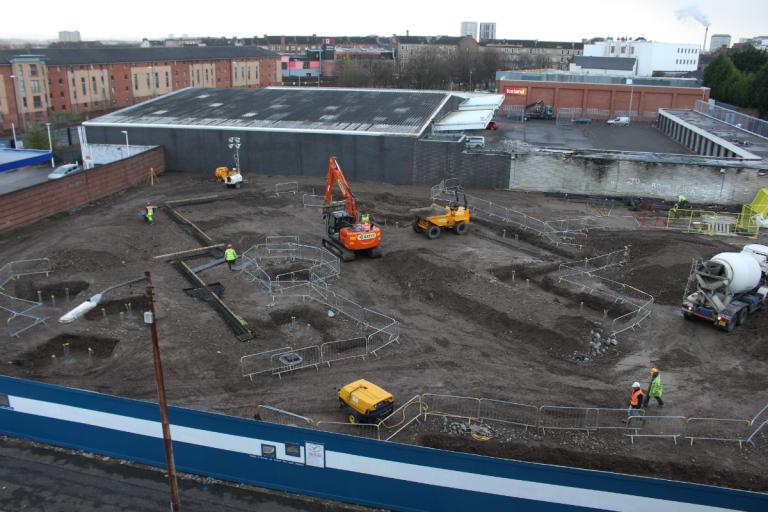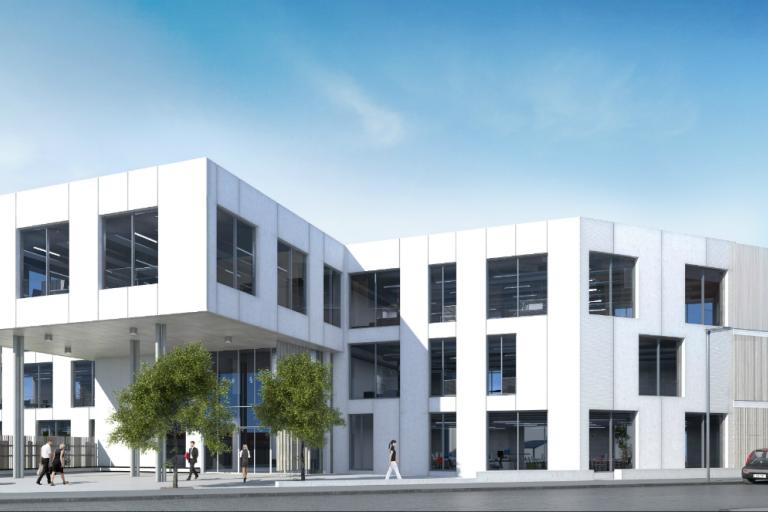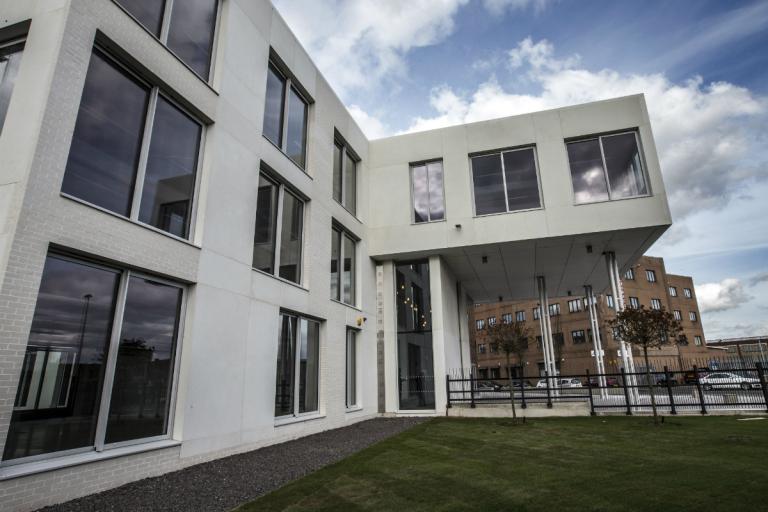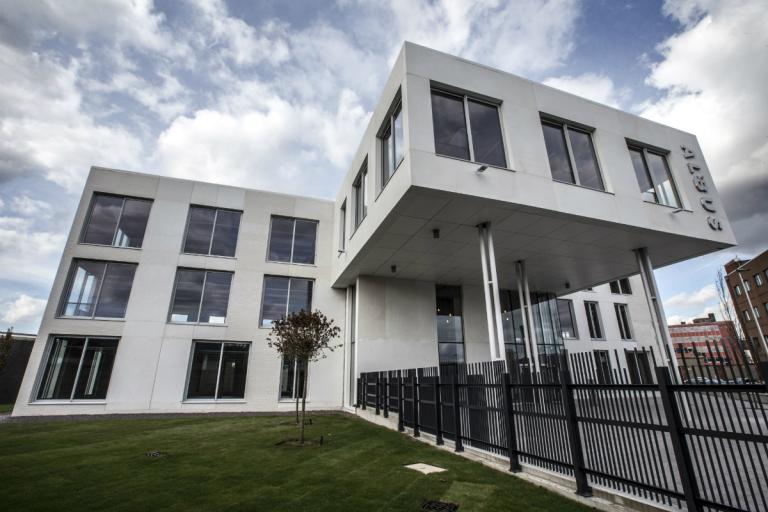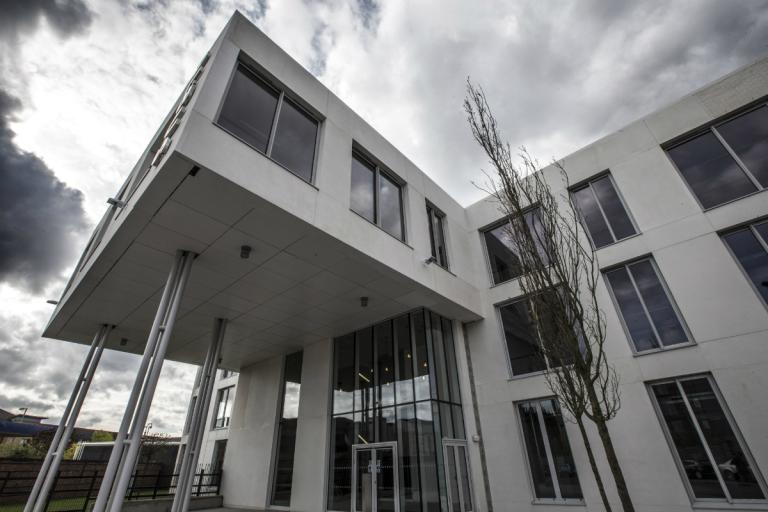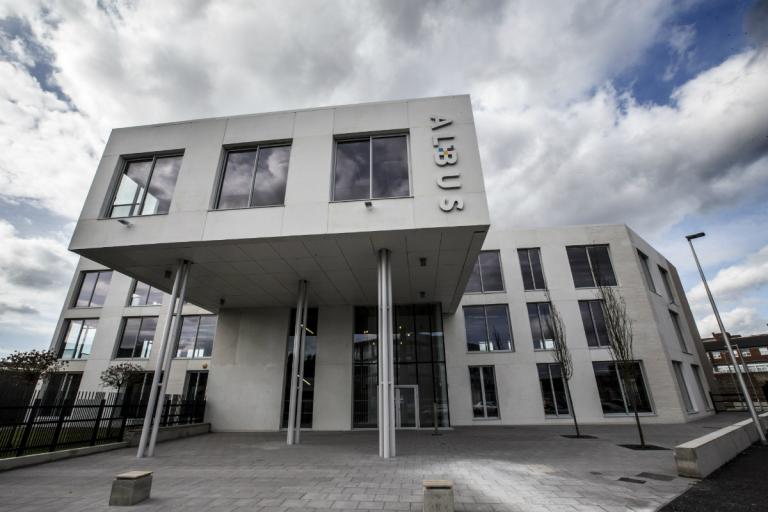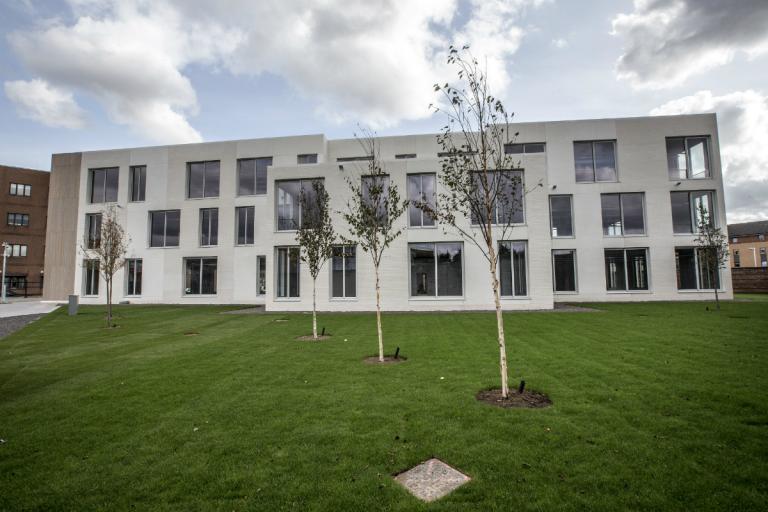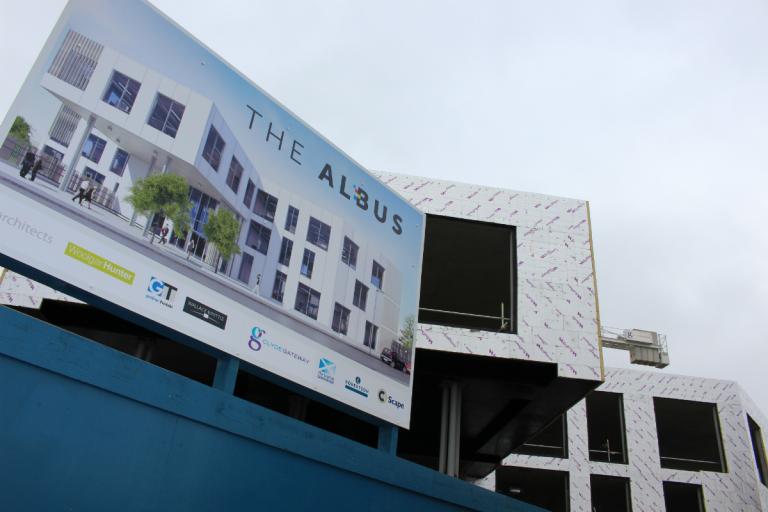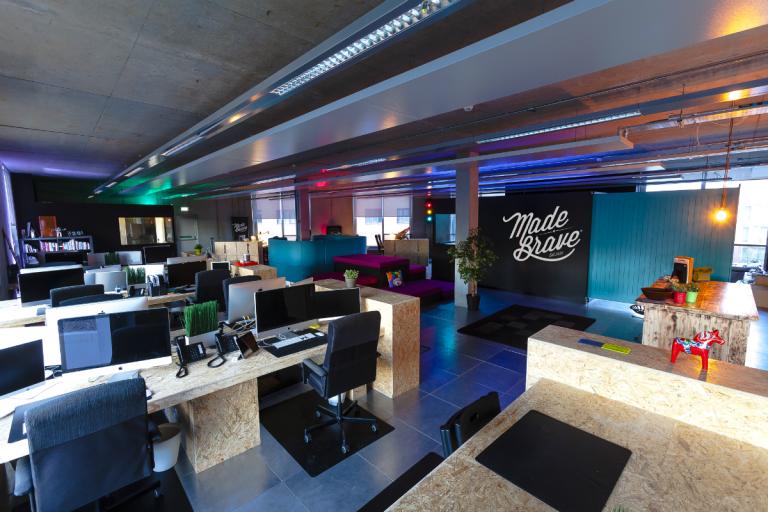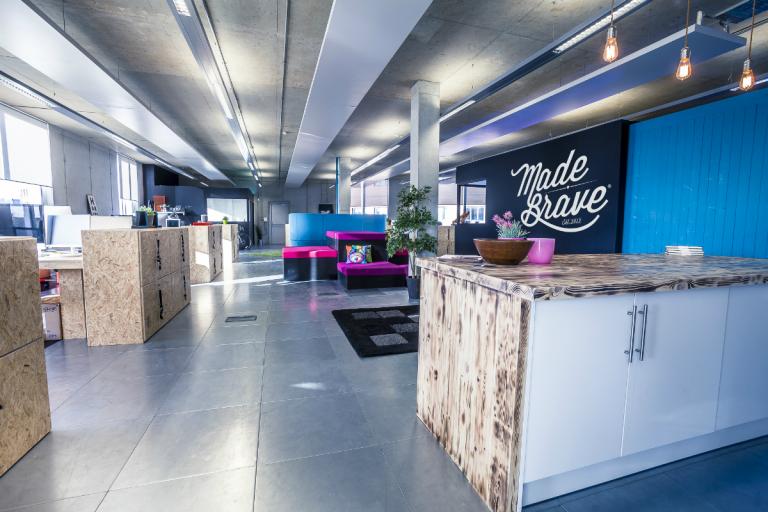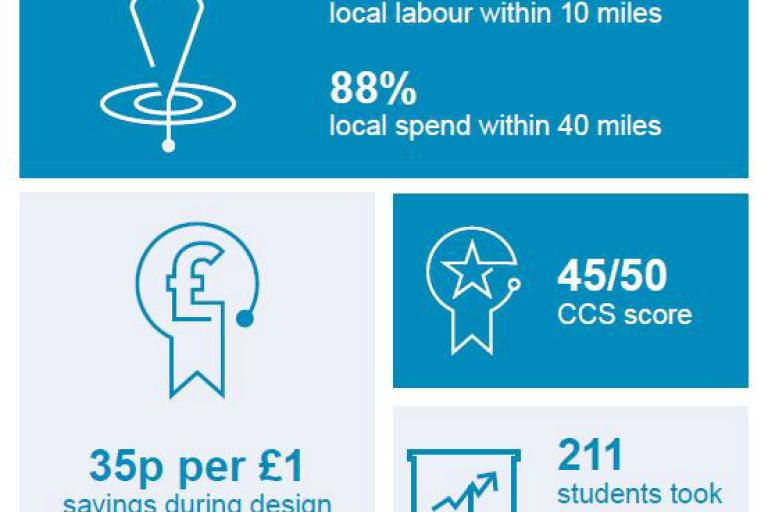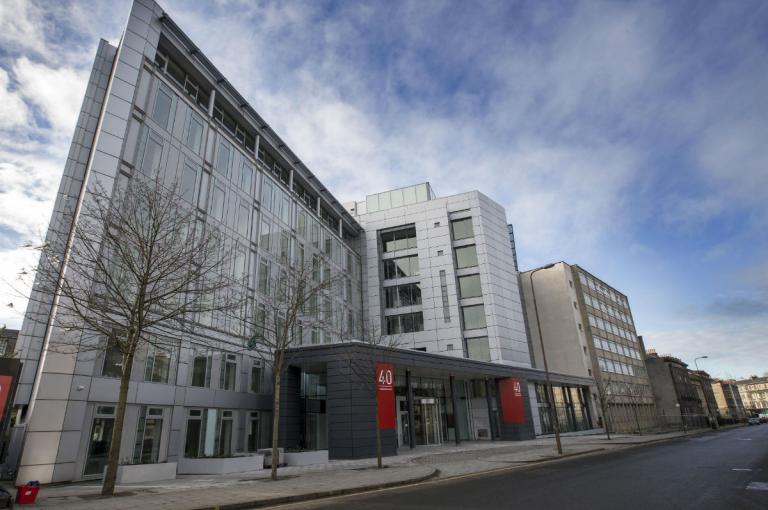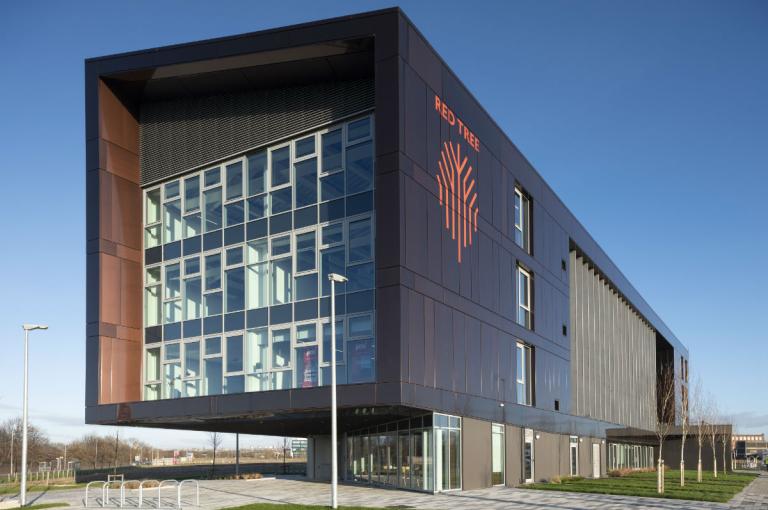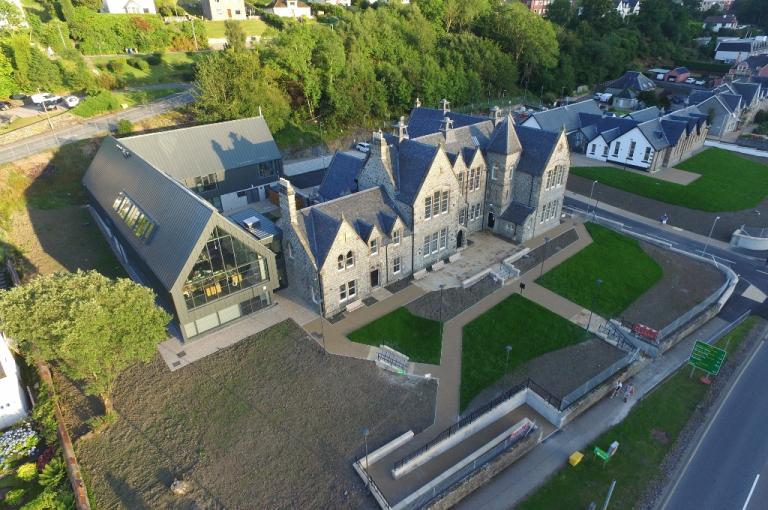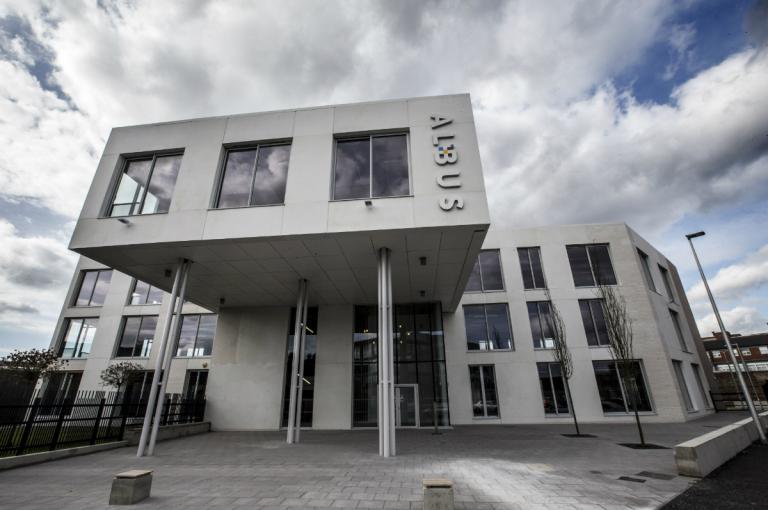
The Albus Building
Get in touch

Summary
Attracting new business to Glasgow’s east end as part of the Commonwealth Games legacy
The Albus is a flexible and sustainable office building, developed speculatively to attract new businesses into the Clyde Gateway area, the project has helped strengthen the Commonwealth Games legacy, attracting new business to an area severely impacted by industrial decline.
We provided Clyde Gateway with an attractive, 1,900m2 office development in Bridgeton, Glasgow. The concrete-frame building offers seven self-contained open-plan units over three storeys and a 34-space car park.
The project was procured through the Scape Major Works framework (now superseded by Major Works Scotland), part of the National Construction framework. It was delivered by Robertson, in partnership with Willmott Dixon. Scape Group is a public sector owned built environment specialist offering a full suite of national frameworks and innovative design solutions.
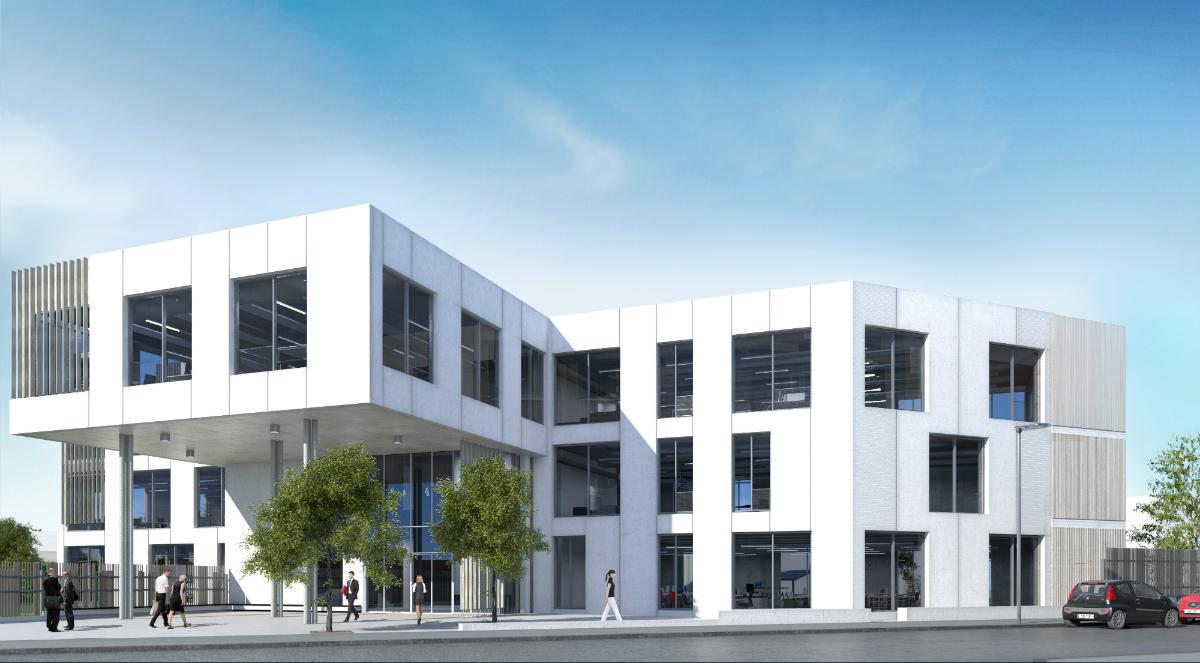
A high level of coordination with the design team and installing contractors ensured that the internal finishes were aesthetically pleasing, achieving the monochromatic and minimalist appearance required.
Developing high-quality office space to attract new businesses
Building on the success of the Commonwealth Games 2014, Clyde Gateway's main objective was to kick-start regeneration, attracting new businesses to the east end of Glasgow as part of their drive to deliver positive social, economic and environmental change.
To maximise marketing potential and exposure to potential tenants, the client needed to have the building complete in time for the Commonwealth Games. Our collaborative approach provided the building in time, welcoming its first new tenant within two weeks. The building was fully let within 12 months, attracting seven new businesses into the area.
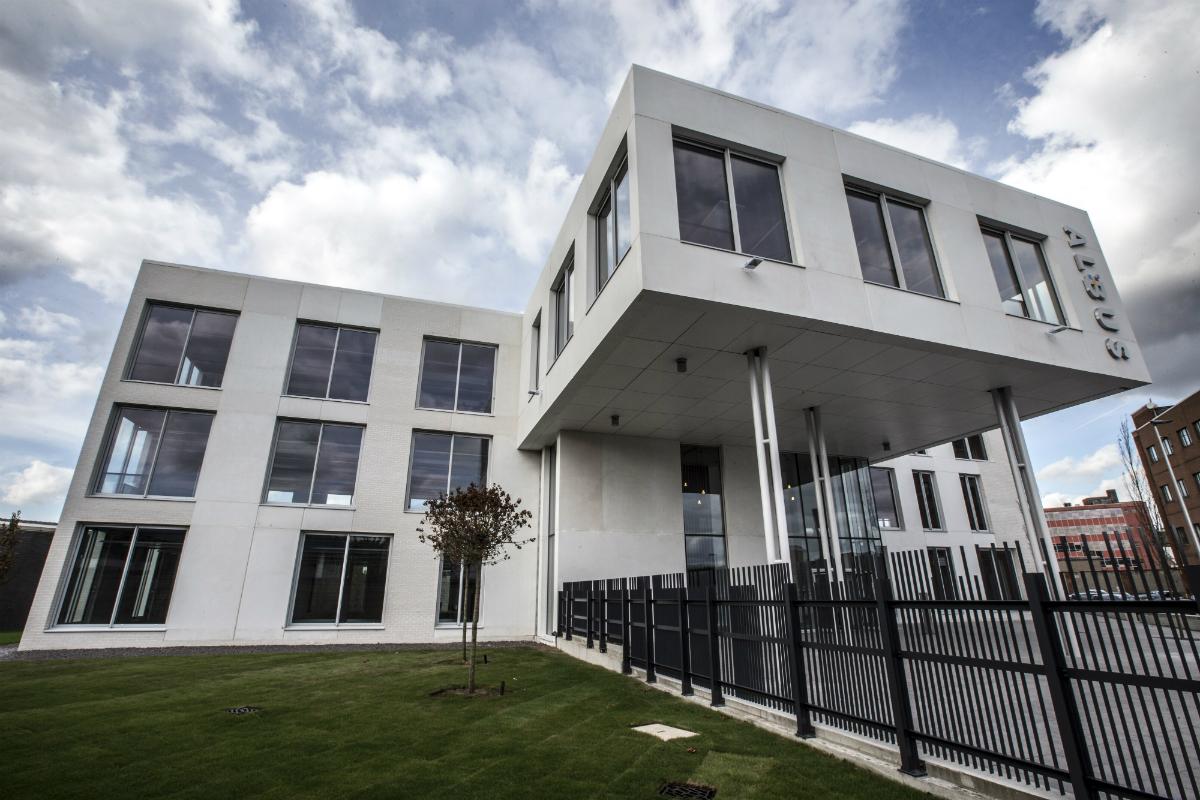
A key design feature of The Albus was the high quality of finish to the internal concrete structure. All ceiling and wall finishes were omitted, exposing not only the concrete finish but all the internal services within the building. Working with our supply chain, we developed a bespoke solution to give the high-quality finish our client required.
Creating environmental excellence
The Albus is a sustainable development with a BREEAM Very Good rating and B-rated Energy Performance Certificate. A holistic environmental strategy underpins the building design to reduce energy consumption and address carbon emissions. Simple principles have driven the design to reduce the overall need for artificial lighting, reduce heating and cooling, and offer a work environment that is adaptable to varying tenant requirements.
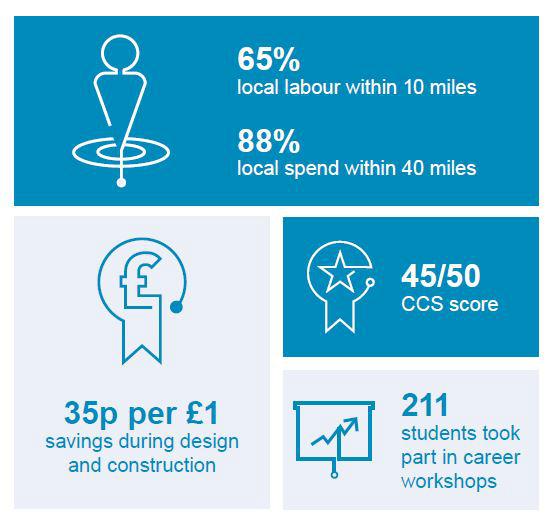
Community-focussed urban regeneration
We worked with Clyde Gateway, the design team and stakeholders to maximise the benefits we could bring to the community.
We built up an excellent relationship with Glasgow Kelvin College, offering site visits to engineering students, with a total of 51 weeks of work experience and a tour around the site for college staff. As a result of our approach, we were appointed as the college's first ever Stakeholder of the Month. We also engaged with pupils from both Eastbank Academy and St Mungos High School, providing a total of 221 student visits to site.
Additionally, we maximised local employment, with 65% of staff living within 10 miles of site, 83% within 20 miles and 92% within 40 miles.
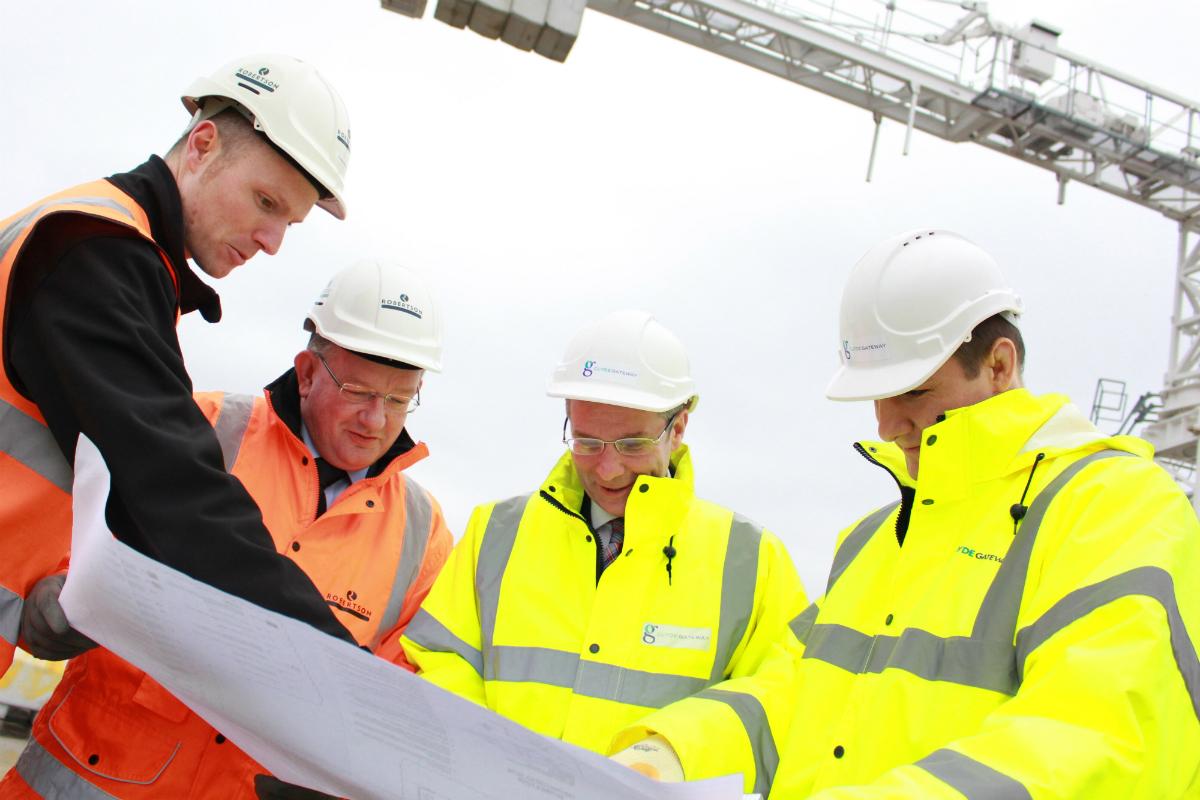
After the project scored an impressive 45/50 in the Considerate Constructors Scheme (CCS) report, Andrew Agapiou, the CCS monitor noted: "The overall impression is of a fine team effort by all those associated with the project, contractor, client and other stakeholders, and this has been replicated at site level between the management team and workforce who are deserving of great credit. The standards achieved here show a real commitment to improving the image of construction and for which all those involved should be congratulated."

